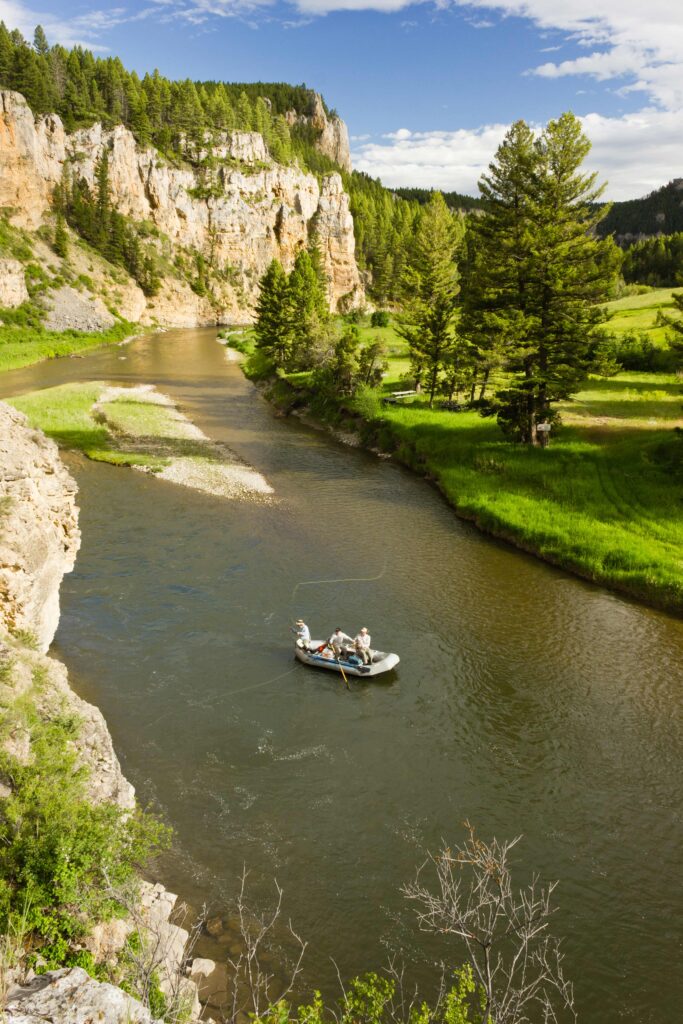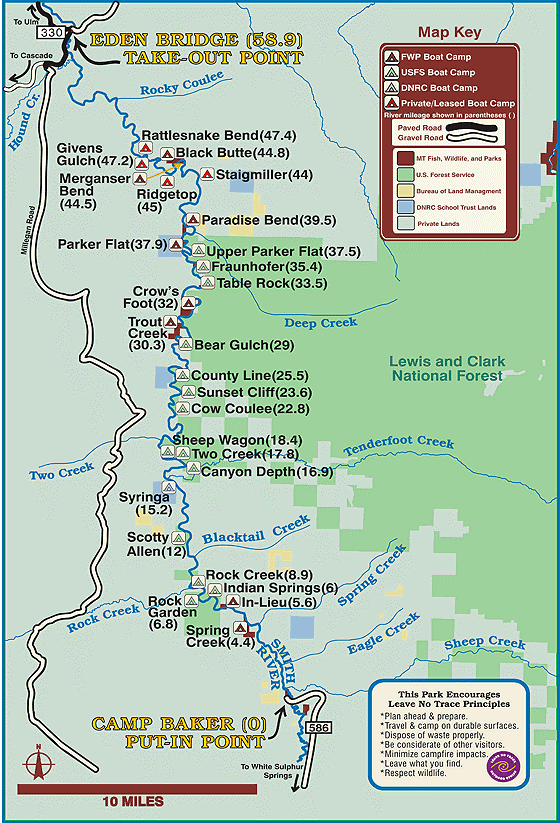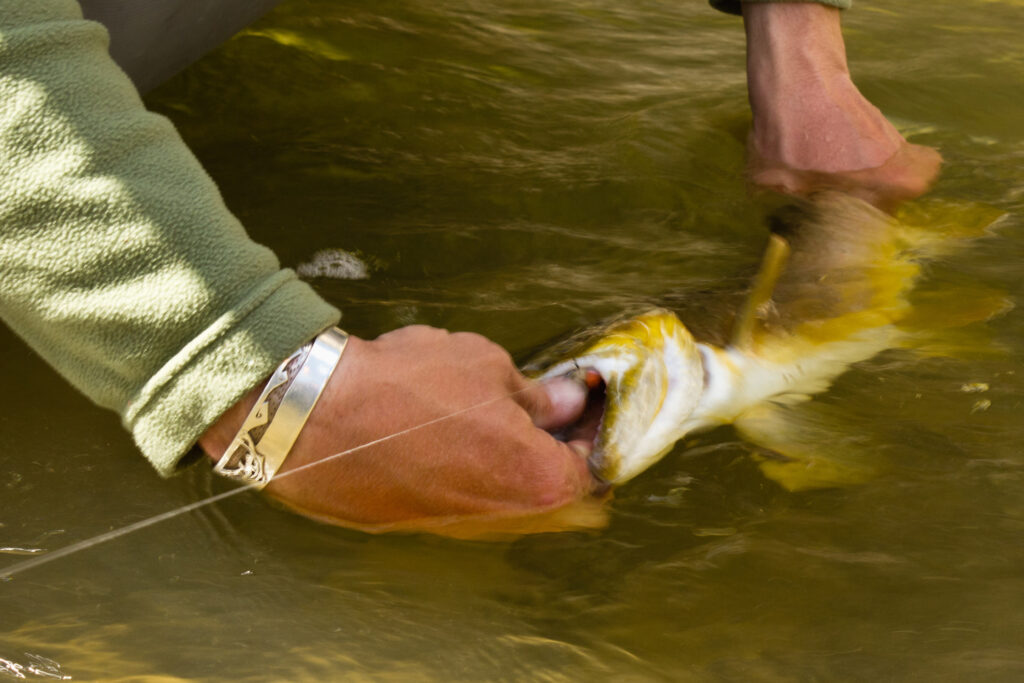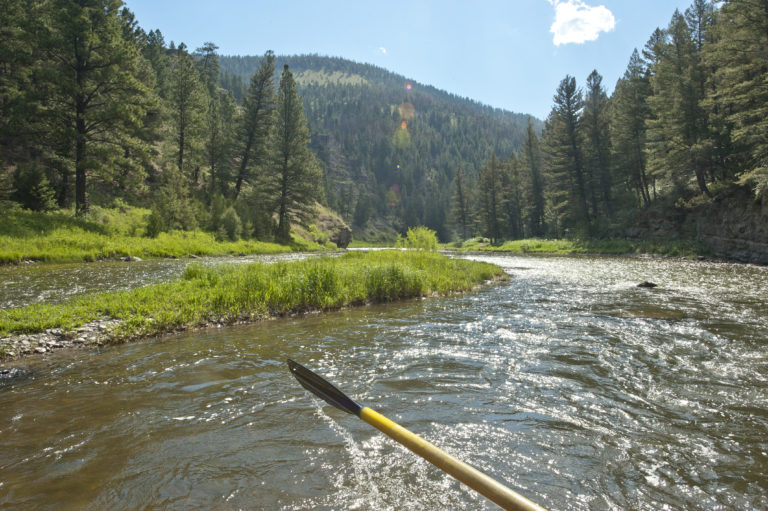
About the Smith
The Smith River drainage is located south of Great Falls in Meagher and Cascade Counties of west-central Montana. The river drains the Big Belt Mountains on the west, and the Little Belt and Castle Mountains on the east. From the confluence of the North and South forks, the Smith River courses about 120 miles through a broad agricultural valley, then into 45 miles of spectacular deep limestone canyon country. After leaving the canyon, the river rolls through a valley edged by rolling hills and comprised of grasslands and cultivated tracts.
Approximately 125 tributaries contribute to the Smith River. Besides the 50-mile-long North Fork and 38-mile-long South Fork, Big Birch, Newlan, Rock, Sheep, Eagle, Tenderfoot and Hound Creeks are important tributaries. Several, such as Sheep and Tenderfoot Creeks contribute high-quality water to the Smith’s mainstem and serve as important spawning tributaries for the Smith’s famous wild rainbow and brown trout.


Recreational Access in the Smith River Drainage
About 70 percent of the land in the Smith River drainage is privately owned. The U.S. Forest Service and State of Montana own the balance. Public access to the river is limited. Montana Fish, Wildlife and Parks manages four fishing access sites in the drainage. They are:
- Newlan Creek Reservoir, north of White Sulphur Springs
- Fort Logan, located on the river about 19 miles northwest of White Sulphur Springs
- Camp Baker, the launch site for floaters
- Eden Bridge, which is 61 river miles below Camp Baker and the take-out for floaters in the permitted section of the river

About the Smith River’s Recreational Fishery
An estimated 741 miles of habitat in the Smith River drainage are capable of supporting coldwater fish such as trout. The main Smith River is a nationally known recreational fishery. Montana FWP has managed the river as a wild trout fishery since 1974, when the agency stopped stocking most rivers and streams in the state. Westslope cutthroat trout, mountain whitefish and arctic grayling were the original coldwater sport fish in the drainage. Today, wild populations of introduced species, including brook, rainbow and brown trout predominate. Brook trout are found primarily in upper elevation tributaries. Though cutthroat trout were once very common in the Smith River drainage, today only six populations of genetically pure fish can be found in the drainage, comprising less than 2 percent of their historical range.
Small, upper elevation tributaries in the Smith River are dominated by introduced brook trout. Lower elevation, perennial streams as well as the Smith and wild populations of brown and rainbow trout dominate its largest tributaries. In fall 2011, FWP estimated that densities of rainbow and brown trout were about 250 for each species in the upper section of the permitted portion of the river, just downstream of Camp Baker. The historic average based on 33 years of data is 506 rainbows and 312 brown trout per mile. Further downstream, densities of both species have generally been lower.
The Smith River’s trout numbers tend to fluctuate. This is often related to water years. Dry years mean low flows and high temperatures, which can create mortality among trout populations. Winter icing conditions has also adversely affected fish populations. Trout numbers could probably be kept consistently higher by improving stream flows and riparian habitats in tributaries. Irrigation withdrawals and grazing have impaired the fishery, especially in tributaries. Radio-telemetry research in recent years indicates that some fish in the Smith River move great distances. For example, rainbow and brown trout tagged in the Missouri and Sun Rivers have been detected in the Smith River. Fish from the Missouri have been found to use Sheep Creek, a significant tributary north of White Sulphur Springs where a large copper mine is proposed.
The section of the Smith that requires a permit for floating – Camp Baker to Eden Bridge – is very popular for anglers. Despite a season that is truncated by dwindling flows, this reach averaged more than 14,200 angler-days per year between 1982 and 2009. Montana FWP economists estimate the Smith River fishery annually generates at least $1.7 million to the economy. This does not include the significant amount of use by non-angling floaters and other recreationists.
Floating the Smith River
In 1989, the Montana Legislature passed the Smith River Management Act, which empowered FWP to manage the river using a fee system and limited-entry permit system. FWP’s Parks Division manages the river. More than 6,100 people apply annually for the opportunity to float the Smith. Visit Montana Fish, Wildlife & Parks for more information.
